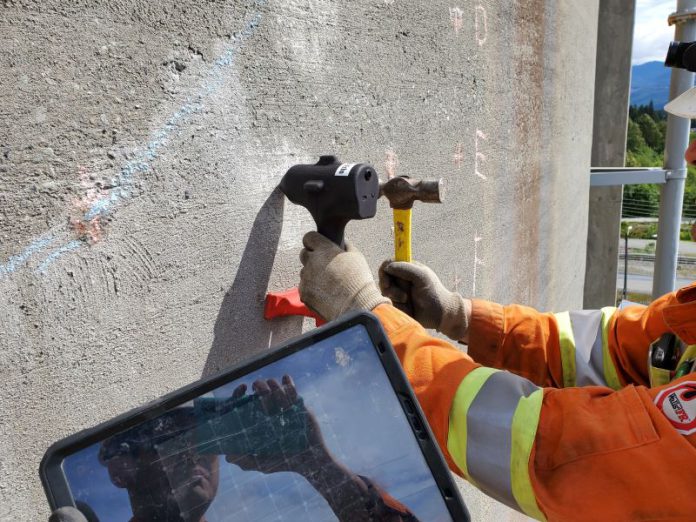Construction is a domain of precise execution and unwavering attention to detail. For the untrained eye, concrete might just be the solid foundation of a building, a sidewalk beneath your feet, or a word synonymous with ‘stability.’ Yet, for the professionals dedicated to the craft of construction, concrete is a canvas of careful calculations and engineered perfection upon which human safety and the built environment rely. This guide is tailor-made for the discerning eyes that oversee these critical aspects.
Importance of Proper Concrete Inspection
The very essence of a structure’s longevity hinges on the quality of its concrete, from skyscrapers to residential homes. Deterioration in this primary material can lead to catastrophic consequences if left unnoticed or unaddressed. Thus, the first step in preventing such outcomes is a comprehensive inspection that leaves no stone (or slab) unturned.
Navigating Concrete’s Challenges
Concrete’s inherent susceptibility to issues like shrinkage, cracking, spalling, and water damage makes it imperative for any construction professional to possess a discerning eye and thorough knowledge. Each issue warrants its own set of diagnostic measures, and understanding these can prevent significant damage down the line.
Visual Inspection
Visual observation is the inspector’s most fundamental tool. By conducting a meticulous scan, concrete scanning brisbane professionals can carefully examine the concrete for overt signs of stress or compromise. This keen attention to detail allows for the identification of initial clues about the overall health of the concrete structure, enabling timely interventions to ensure its long-term durability and performance.
Cracks and Spalling
Cracks can manifest as a network of hairlines or deep fissures that run the length of a surface. They can signal anything from minute shrinkage issues to significant structural overload. Spalling, the chipping or flaking of concrete due to corrosion or freeze-thaw cycles, presents a surface integrity concern.
Surface Texture and Finish
The way concrete feels can mean as much as its appearance. A rough texture often implies improper pouring or environmental issues during curing. Smooth finishes are desirable but can also hide underlying problems.
Colour Uniformity
A consistent colour denotes uniform curing, while variations could be indicative of drying or curing issues. It can also suggest differential wear and weathering, which affect the concrete’s strength.
Structural Inspection
Assessing the structural integrity of concrete is of utmost importance in order to ensure its ability to safely bear the intended loads, without any risk of collapse or deformation. Proper evaluation of factors such as material composition, reinforcement, and environmental conditions allows for a comprehensive understanding of the concrete’s capacity to withstand external forces and maintain its stability over time. By conducting thorough assessments, engineers and construction professionals can make informed decisions that contribute to the long-term durability and safety of concrete structures.
Reinforcement Placement
Visual confirmation of the correct placement and distribution of reinforcement bars is essential. Any deviation in the required positioning can compromise the structure’s integrity.
Load-Bearing Capacity
Investing in non-destructive testing methodologies such as ultrasonic pulse velocity can provide a clearer indication of the concrete’s density and strength, warning against overuse or potential failure points.
Concrete Strength
Field-cured samples or in-situ testing can measure the concrete’s compressive strength and ensure it meets design specifications.
Moisture and Dampness
Moisture has the potential to gradually deteriorate its load-bearing properties, compromising its structural integrity over time. The presence of excessive moisture can lead to the growth of mould, mildew, and other detrimental factors, further weakening the concrete. Therefore, it is crucial to implement effective moisture mitigation strategies to safeguard the longevity and durability of concrete structures.
Signs of Moisture Damage
Visual inspection for efflorescence, rust staining, or algae growth can denote moisture-related issues. Delamination or blistering are also observable indicators.
Moisture Testing
Utilise methods such as the plastic sheet or calcium chloride tests to quantitatively measure moisture presence and determine the correct installation time for moisture-sensitive materials.
Water Penetration Issues
Pinpoint the sources of water intrusion, whether from surface runoff, groundwater movement, or plumbing leaks. Corrective measures should be part of the inspection’s end goal.
Durability and Longevity
Concrete’s longevity is a complex interplay of many factors, including its mixture, placement, and subsequent treatment.
Mix Proportions
Know the mix design parameters. An improper mix ratio can lead to a host of long-term concerns ranging from strength deficiencies to integrity compromises.
Curing Methods
Evaluate the curing process. Insufficient or hasty curing can lead to reduced strength, lower durability, and increased susceptibility to weathering.
Environmental Factors
Understand the climate and consider any corrosives or harmful agents the concrete must withstand. UV exposure, acid rain, and heavy pollution are but a few examples.
Safety Considerations
Walking on concrete should never be a hazard. Its design and maintenance must meticulously account for user safety. This includes ensuring proper slip resistance, adequate lighting, and clear signage to guide pedestrians. By prioritising these aspects, we can create a safer and more enjoyable walking experience for everyone.
Trip Hazards
Inspect for uneven surfaces, observed commonly at joints or where non-concrete surfaces meet. These must be dealt with to prevent tripping accidents.
Slip Resistance
Ensure that surfaces, particularly in areas where spilled liquids are likely, maintain sufficient slip resistance. Test methods like the dynamic coefficient of friction to affirm safety.
Proper Drainage
Drainage is crucial for managing water around and beneath concrete. Evaluate the efficiency of the current system to prevent water-related damage and erosion.
Conclusion
The concrete jungle is a fascinating and complex ecosystem, where the delicate balance of performance and survival intertwine. Longevity in this urban landscape relies heavily on the meticulous oversight of its dedicated maintainers. By diligently following the guidelines and comprehending the significance of each inspection point, professionals in the construction industry can ensure that the structures they construct and maintain are not only robust and secure but also capable of enduring the test of time. It is imperative to remain vigilant in conducting thorough visual surveys, meticulous in performing structural evaluations, and unwavering in the pursuit of safety and uncompromising quality. The solidity and resilience of our world depend on the unwavering commitment to these principles. Let us continue to build and maintain with unwavering dedication, ensuring a future that is both secure and enduring.















